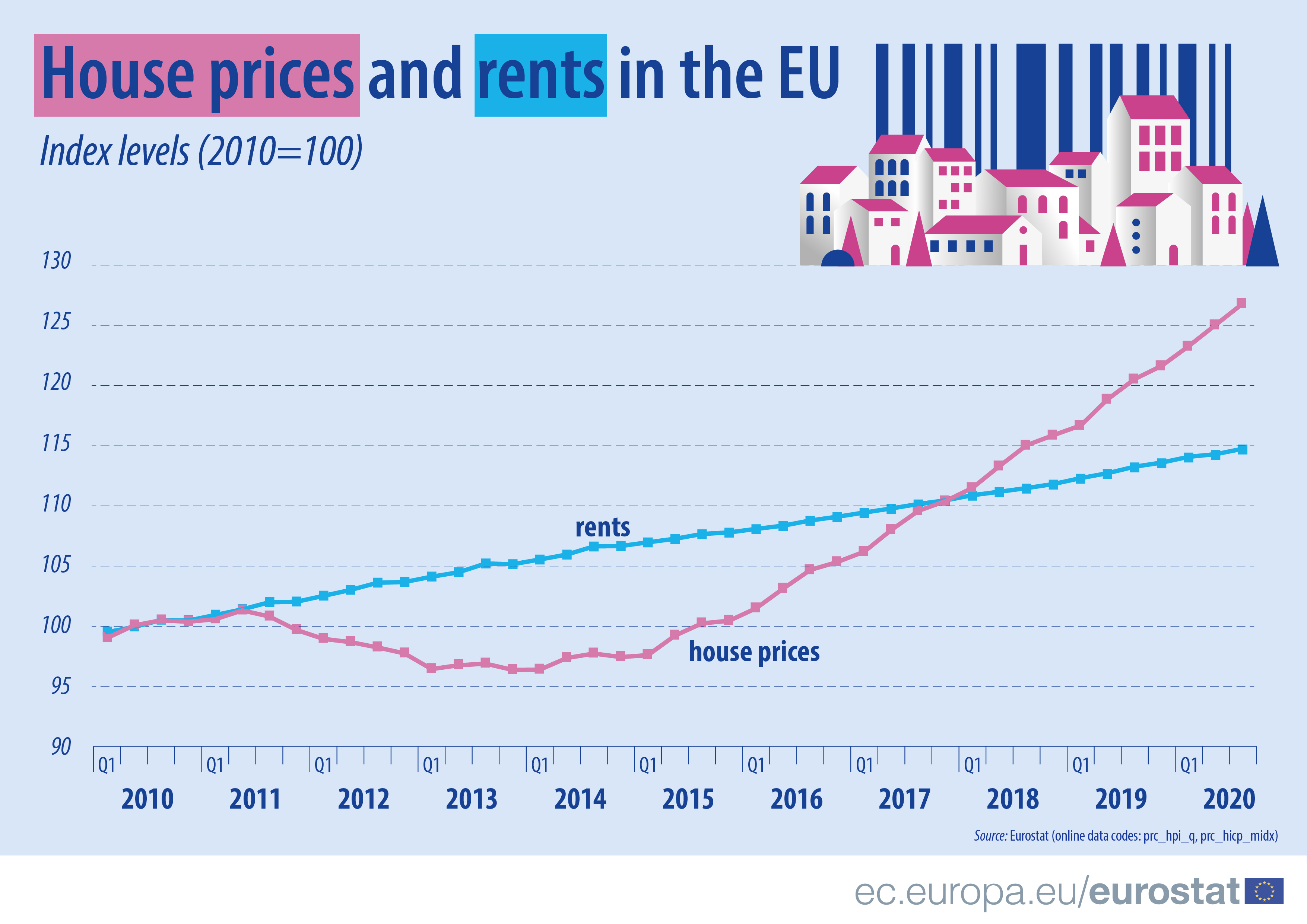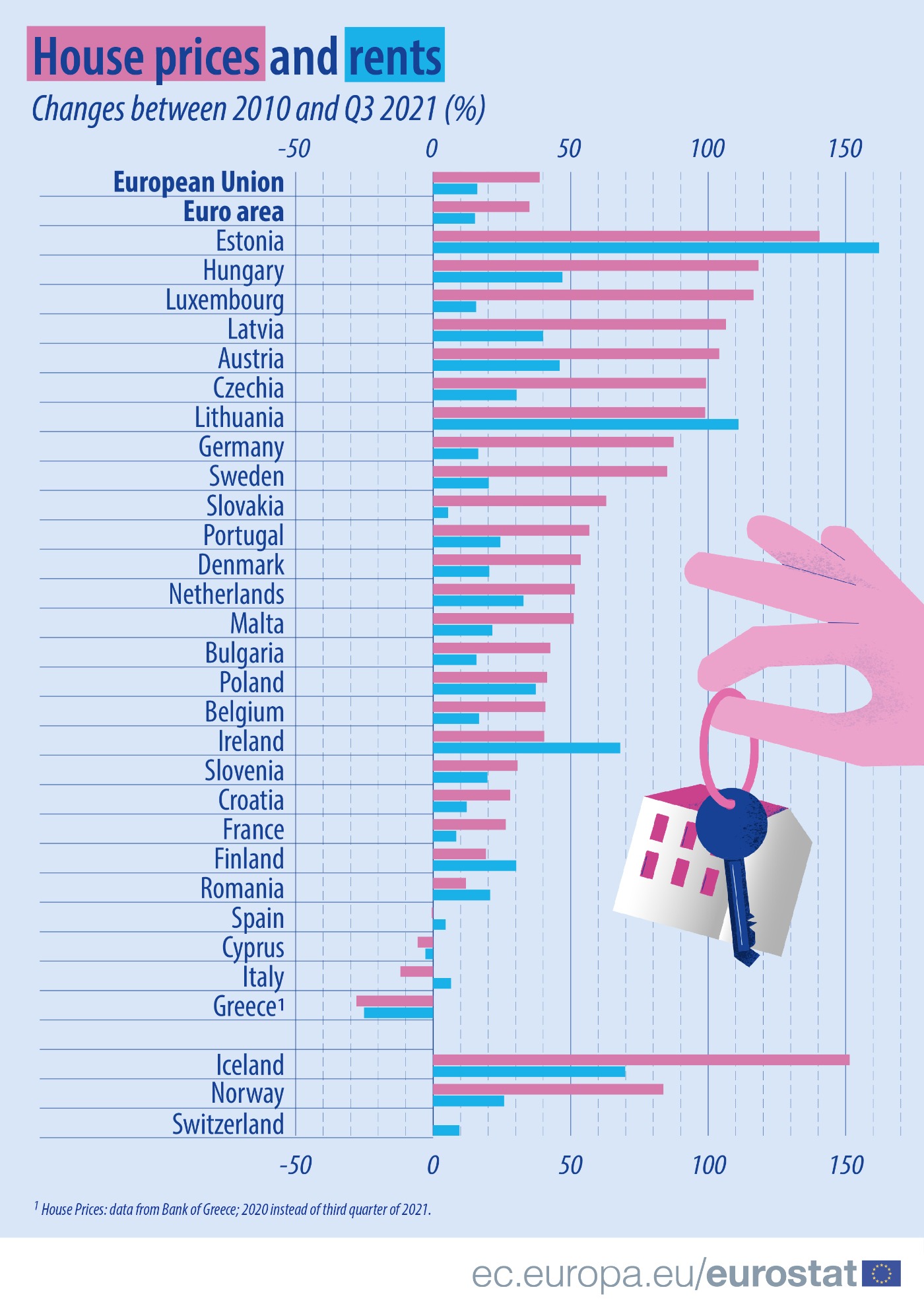
In Q3 2021, the Czech Republic registered the strongest house price growth within the EU, both in a year-on-year (22%) and a quarter-on-quarter (7.3%) comparison, well above the EU average of 9.2% and 3.1%, respectively, according to Eurostat’s House price index.
Among CEE countries, Hungary was the only other one that registered an annual growth rate higher than the EU average, whereas Slovakia was the only other one to record above-average quarterly growth.
Long term increase continues
Rents and house prices in the EU have continued their steady increase in Q3 2021, going up by 1.2% and 9.2% respectively, compared with Q3 2020. Between 2010 and Q2 2011, house prices and rents in the EU followed similar paths, but since Q2 2011, those paths have diverged significantly. While rents increased steadily throughout the period up to Q3 2021, house prices have fluctuated considerably.

After a sharp decline between Q2 2011 and Q1 2013, house prices remained more or less stable between 2013 and 2014. Then, there was a rapid rise in early 2015, since when house prices have increased at a much faster pace than rents.
Over the period 2010 until Q3 2021, rents increased by 16% and house prices by 39%.
Since 2010, house prices more than doubled in several countries
When comparing Q3 2021 with 2010, house prices increased more than rents in 18 EU Member States. House prices increased in 23 EU countries and decreased in four, with the highest rises in Estonia (+141%), Hungary (+118%), Luxembourg (+117%), Latvia (+106%) and Austria (+104%). Decreases were observed in Greece (-28%), Italy (-12%), Cyprus (-6%) and Spain (-0.5%).

For rents, the pattern was different. When comparing Q3 2021 with 2010, prices increased in 25 EU Member States and decreased in two, with the highest rises in Estonia (+162%), Lithuania (+111%) and Ireland (+68%). Decreases were recorded in Greece (-25%) and Cyprus (-3%).



